A Special Day for Girls ~Hinamatsuri~
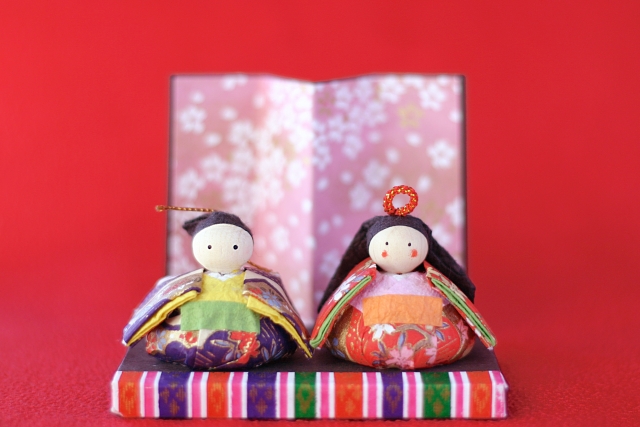
Have you ever heard of the Japanese festival “Hinamatsuri”?
Hinamatsuri is a “Special Day for Girls.”
This time, I will show you how you celebrate Hinamatsuri, focusing on the snacks you can eat during this special day!
What is Hinamatsuri?
Also known as Girls’ Day or Doll Festival, March 3rd is a day where we wish for girls to grow up healthy.
With a long-standing history, this tradition is said to have continued since the Heian Period (8th century~12th century).
You would arrange these dolls called “Hina ningyou (Hina Dolls)” on multi-tiered displays inside your home.
Also, it is a tradition to eat foods like chirashi-zushi (scattered sushi), hishi mochi, and hina-arare.
The snacks that can be eaten during Hinamatsuri and their meanings
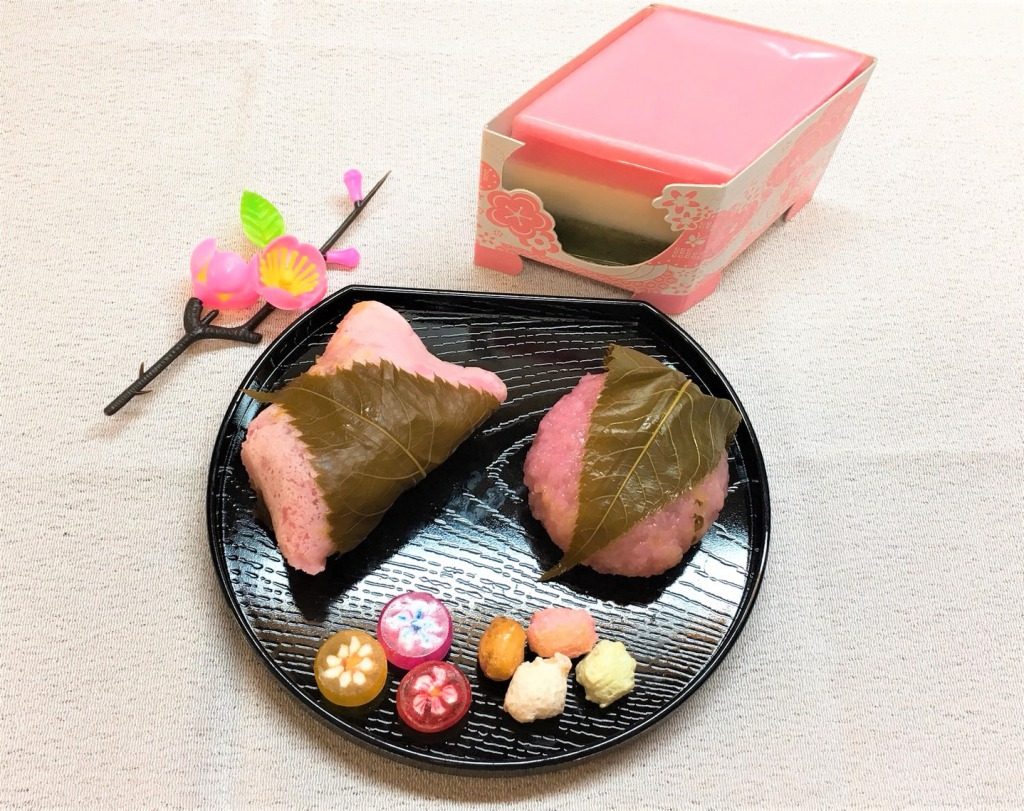
I will introduce hishi mochi, sakura mochi, hina-arare, and candies in order.
1.Hishi Mochi
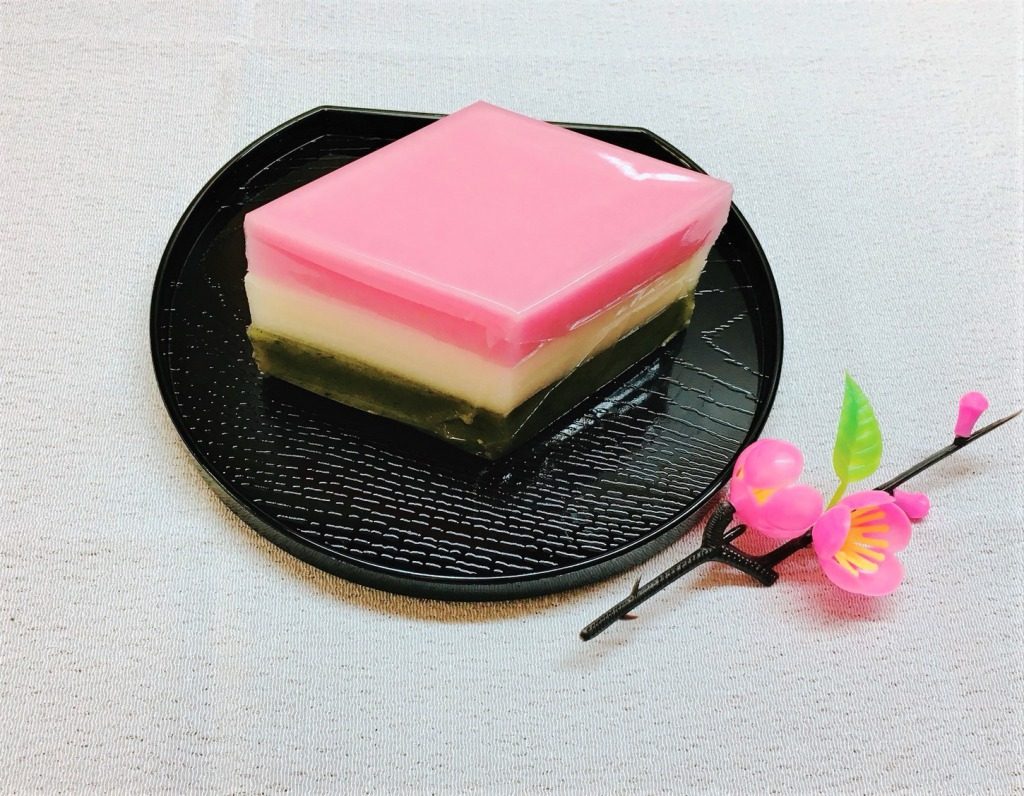
Hishi Mochi are tricolored diamond-shaped rice cakes formed from pink, white, and green layers.
Each color symbolizes a certain meaning:
・green…longevity and health, green earth
・white…purity, white snow
・pink…amulet, peach blossoms
When the 3 colors are together, it means, “the spring season is approaching, the green grass is starting to have its first breath from beneath the snow, and the peach blossoms are blooming on the melting plateau.”
I tried biting into it, but it was tough, dry, and did not have much flavor…
It may not be suitable for eating.
2.Sakura Mochi
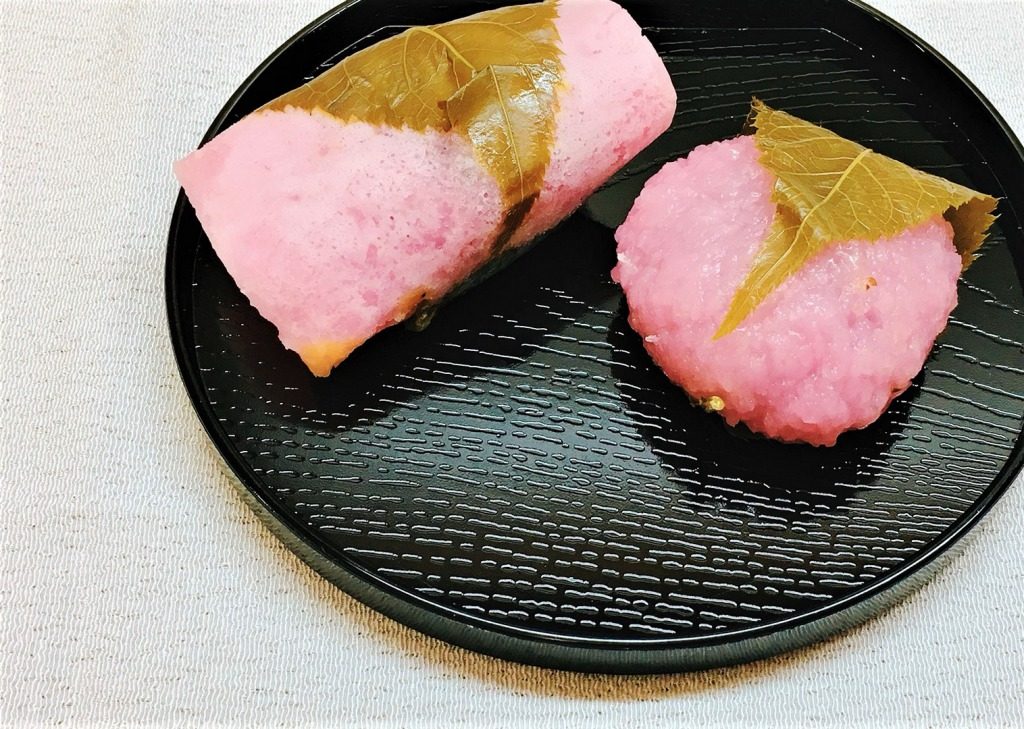
There are 2 types of sakura mochi (pink-colored rice cakes).
The one on the left is mainly eaten in the Kantō region, while the one on the right is mainly eaten in the Kansai region.
The sakura mochi on the left is red bean paste with wrapping made from flour and water.
The sakura mochi on the right is red bean paste wrapped with glutinous rice.
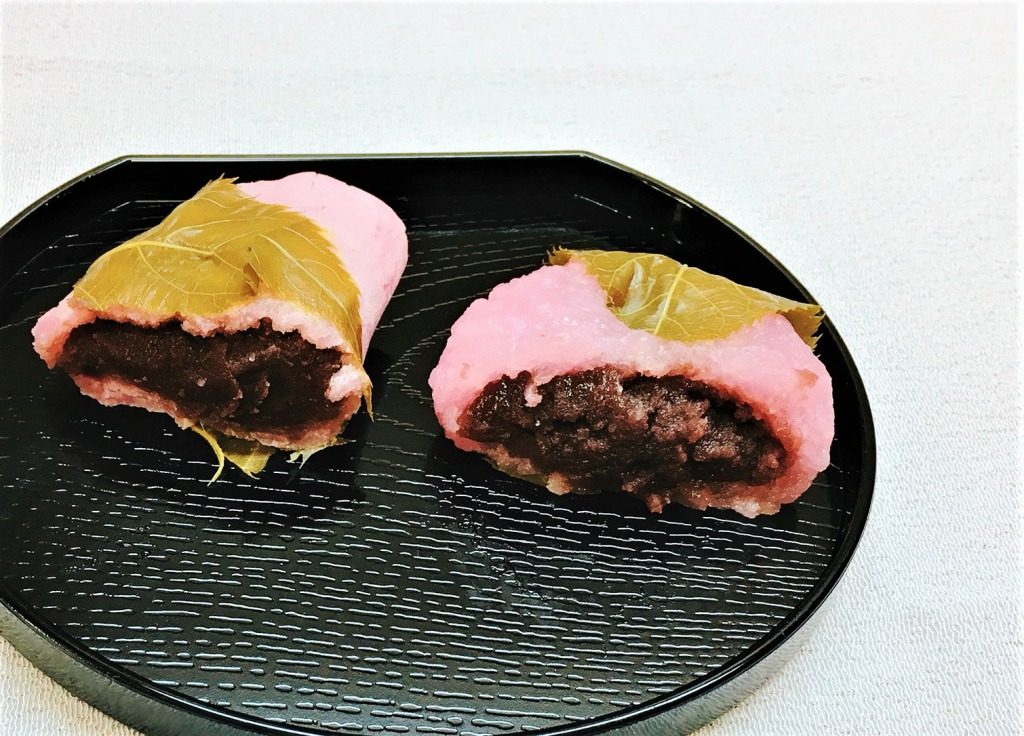
Salted cherry blossom leaves are on the outside.
The scent is strong, and you can taste the flavors of the salted cherry blossom leaves on the rice cakes.
Since they have a distinct scent and flavor, people seem to either love it or dislike it, even among Japanese people.
I do not like it…
Unlike the hishi mochi, sakura mochi do not seem to be eaten because they have a symbolic meaning behind them.
There is also the theory that they were made to replace the hard-to-eat hishi mochi.
3.Hina-arare
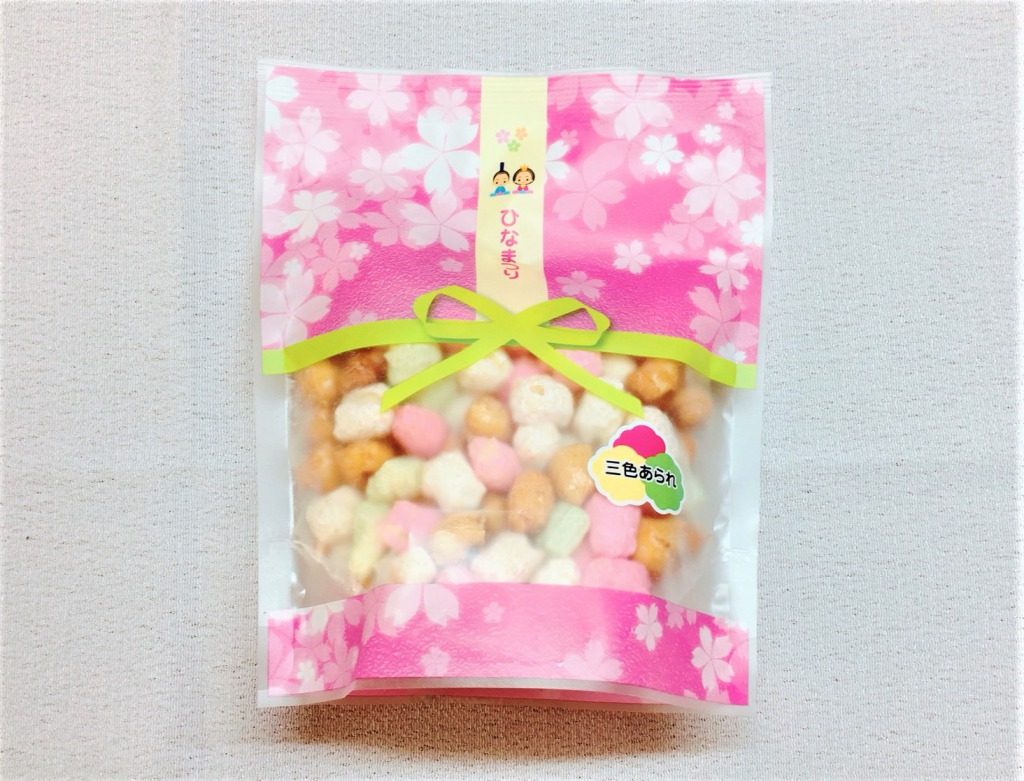
“Arare (rice crackers)” are snacks that are made by cutting rice cakes into 2 x 3 cm pieces, then cutting them into smaller 5 mm pieces, and cooking them over a fire.
They are snacks that make a nice crunchy sound when you bite into them.
Hina-arare are said to be created so that hishi mochi could be eaten outside the house.
Similar to the hishi mochi, there are pink, white, and green colored rice crackers.
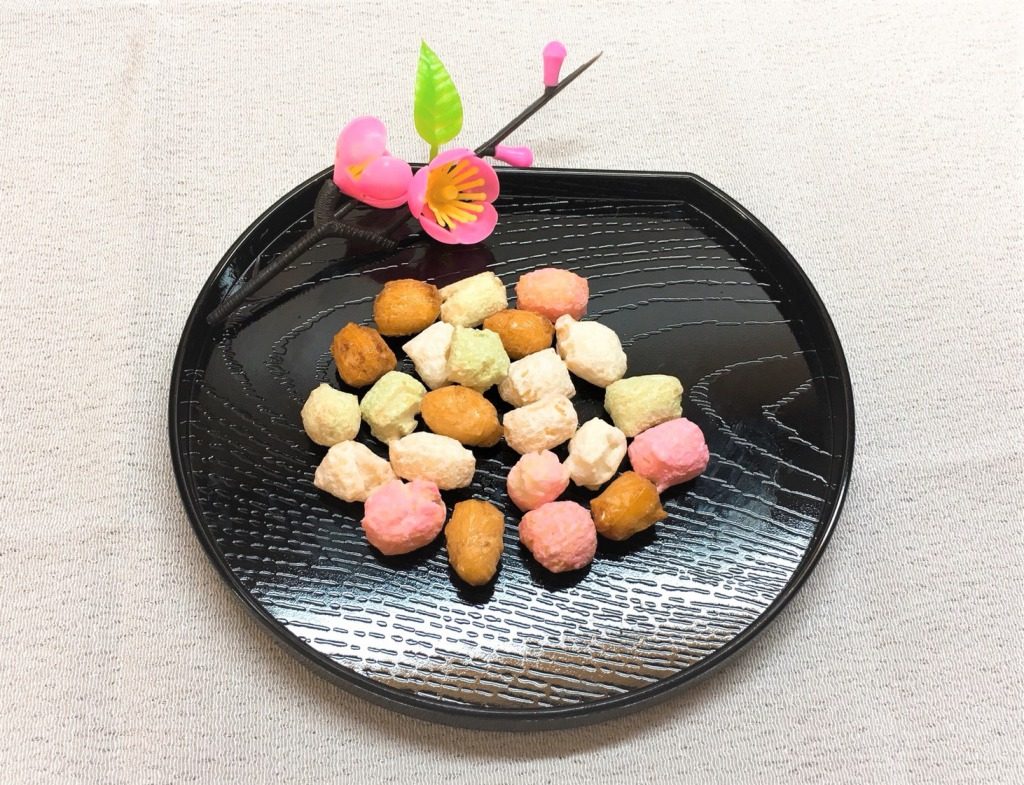
They symbolize:
・green…energy of the trees
・white…energy of the earth
・pink…energy of life
It is hoped that one will continue staying healthy by taking in these various types of energies.
The brown colored rice cracker in the photo is soy sauce flavored and is mainly eaten in the Kansai region.
The pink one is ume (Japanese salt plum) flavored, and the white and green ones are sweet.
4.Candies
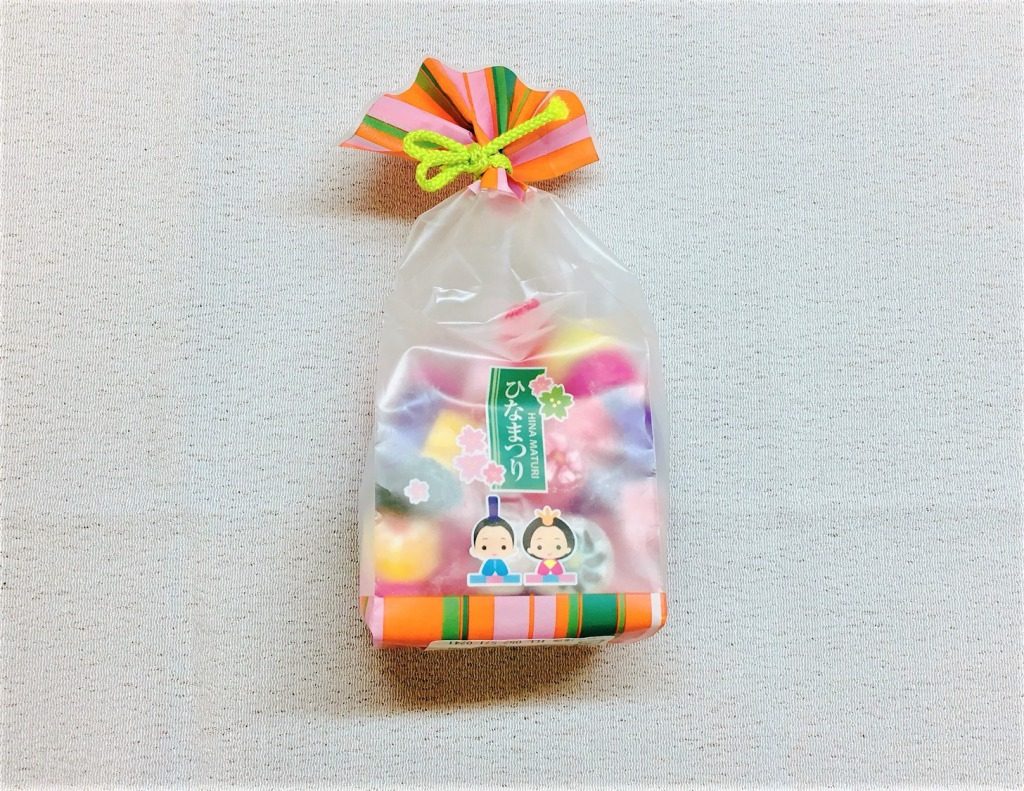
Candies are not among the snacks during Hinamatsuri, but I will introduce you the best-sellers!
Candies (ame) are traditional Japanese sweets. Actually, these candies appeared in the 8th century Japanese books!

Figures like the Emperor and Empress (figures in Hina dolls) are illustrated on the candies.
Because they are colorful, they bring brightness to the Hinamatsuri.
Depending on the color, they can taste like soda or even melon.
Since they are so colorful and sweet, children would be overjoyed!
The products I introduced this time…
I purchased the following at the supermarket: hishi mochi for 428 yen (tax excluded), 4-piece sakura mochi for 238 yen (tax excluded), hina-arare for 288 yen (tax excluded), candies for 298 yen (tax excluded).
You should be able to purchase these with similar prices at any supermarket.
Any household can prepare for the Hinamatsuri with ease.
If you find these, please try them out!
Written by yui